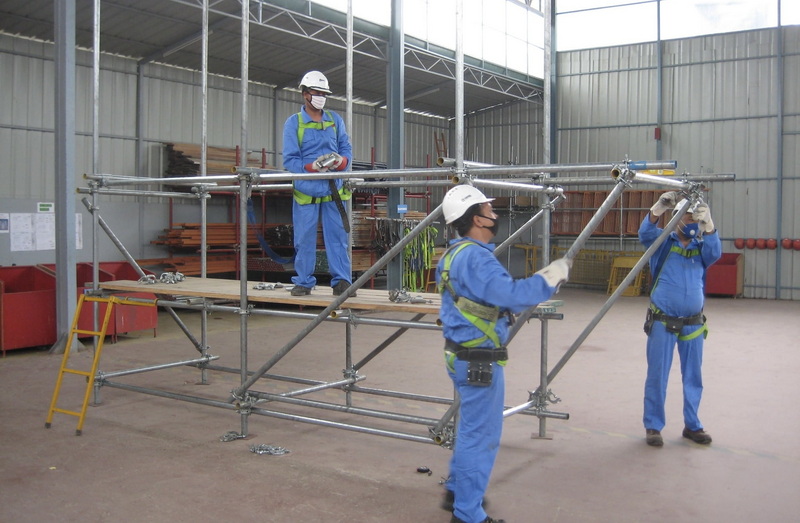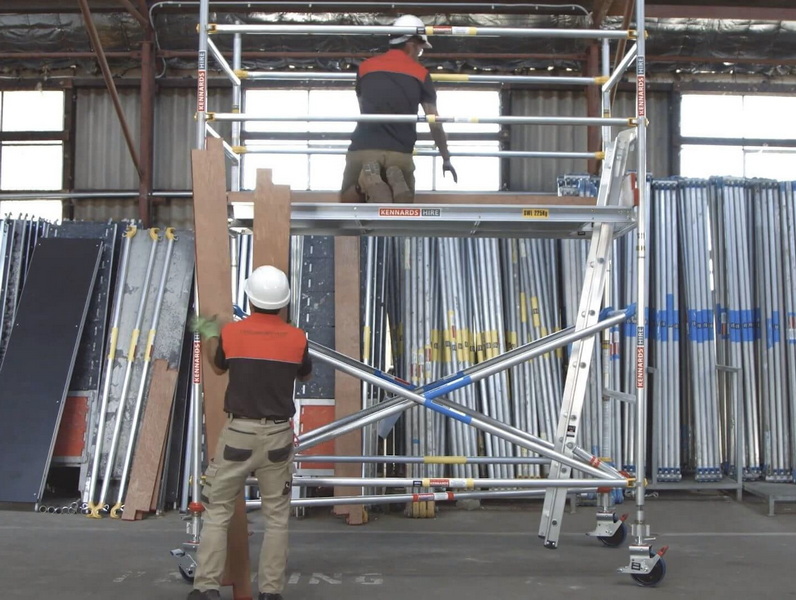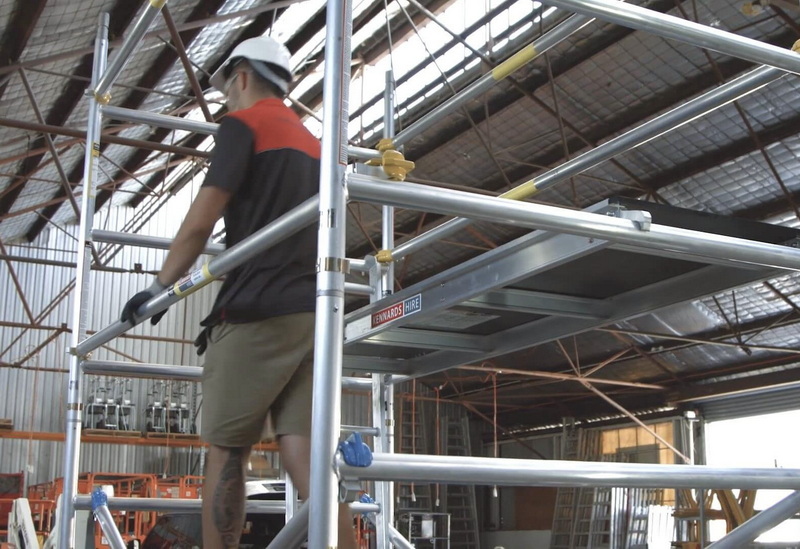Content Menu
● Introduction to Scaffolding Safety
● Importance of Proper Setup
● Step-by-Step Guide to Setting Up Scaffolding Ladders
>> Step 1: Prepare the Ground
>> Step 2: Assemble the Scaffolding Frame
>> Step 3: Install Platforms and Guardrails
>> Step 4: Set Up the Ladder
>> Step 5: Final Inspection
● Safety Tips and Regulations
>> OSHA Guidelines
>> Common Hazards
>> Training and Supervision
>> Regular Maintenance
● Advanced Scaffolding Techniques
>> Cantilevered Scaffolding
>> Suspended Scaffolding
>> Mobile Scaffolding
● Special Considerations
>> Weather Conditions
>> Power Lines and Electrical Hazards
>> Public Safety
● Conclusion
● FAQ
>> 1. What is the recommended angle for a ladder on scaffolding?
>> 2. How high should a ladder extend above the working level?
>> 3. What are the OSHA guidelines for ladder positioning on scaffolding?
>> 4. Can crossbraces be used as ladders?
>> 5. What safety measures should be taken for scaffolds over 10 feet tall?
● Citations:
Setting up a scaffolding ladder safely and correctly is crucial for ensuring the well-being of workers and the stability of the scaffolding structure. This process involves several key steps, from preparing the ground to securing the ladder and scaffolding components. Below is a comprehensive guide on how to set up scaffolding ladders safely and effectively.

Introduction to Scaffolding Safety
Scaffolding accidents are among the most common workplace hazards, often resulting from improper setup or misuse. Therefore, understanding and adhering to safety guidelines is essential for preventing accidents.
Importance of Proper Setup
Proper setup of scaffolding ladders involves not only ensuring the structural integrity of the scaffolding but also providing safe access for workers. This includes using the right equipment, following manufacturer instructions, and adhering to safety regulations.
Step-by-Step Guide to Setting Up Scaffolding Ladders
Step 1: Prepare the Ground
Before setting up scaffolding, ensure the ground is level, firm, and free from obstructions. Use base plates or mud sills to stabilize the scaffolding on uneven surfaces. Additionally, check for any underground utilities or hazards that could compromise the stability of the scaffolding.
Step 2: Assemble the Scaffolding Frame
Follow the manufacturer's instructions to assemble the frame. Ensure it is square and level, using cross braces for stability. Cross braces are essential for maintaining the structural integrity of the scaffolding and preventing it from swaying or collapsing.
Step 3: Install Platforms and Guardrails
Place scaffold platforms and secure them to prevent movement. Install guardrails, midrails, and toe boards around the perimeter for safety. Guardrails should be at least 42 inches high, and midrails should be installed midway between the top rail and the platform.
Step 4: Set Up the Ladder
Position the ladder at a safe angle (between 75 and 80 degrees from vertical) and ensure it extends three feet above the working level. Secure the ladder to prevent it from shifting. Use ladder safety devices such as ladder levelers or stabilizers if necessary.
Step 5: Final Inspection
Before use, inspect all components to ensure they are locked in place and the structure is stable. Check for any damage or wear on the scaffolding and ladder components.

Safety Tips and Regulations
OSHA Guidelines
- Ladder Positioning: The bottom rung of the ladder should not be more than 24 inches from the ground.
- Fall Protection: Use guardrails or body harnesses for scaffolds over 10 feet tall.
- Crossbraces: Ensure they are compatible with the scaffolding type and do not use them as ladders.
Common Hazards
- Unsecured Ladders: Can lead to falls if not properly secured.
- Improper Planking: Gaps between planks should not exceed one inch.
- Overloading: Ensure the scaffolding is not overloaded with workers or materials.
Training and Supervision
Ensure that all workers using scaffolding have received proper training on setup, use, and safety procedures. Supervise inexperienced workers closely to prevent mistakes.
Regular Maintenance
Regularly inspect scaffolding components for wear or damage. Replace any damaged parts promptly to maintain the integrity of the structure.
Advanced Scaffolding Techniques
Cantilevered Scaffolding
Cantilevered scaffolding is used when the base of the scaffolding cannot be placed directly under the work area. It requires additional support and bracing to ensure stability.
Suspended Scaffolding
Suspended scaffolding is used for high-rise work. It requires careful setup and regular inspection to ensure safety.
Mobile Scaffolding
Mobile scaffolding is designed for easy movement around a site. Ensure it is securely braced and locked in place before use.
Special Considerations
Weather Conditions
Avoid setting up or using scaffolding during adverse weather conditions such as strong winds or heavy rain. These conditions can compromise the stability of the scaffolding.
Power Lines and Electrical Hazards
Ensure scaffolding is kept at a safe distance from power lines to prevent electrical shock. Use non-conductive materials for scaffolding components when working near electrical sources.
Public Safety
When setting up scaffolding in public areas, ensure it does not obstruct pedestrian paths or pose a hazard to passersby. Use barriers or warning signs as necessary.
Conclusion
Setting up scaffolding ladders requires careful attention to safety guidelines and manufacturer instructions. By following these steps and tips, you can ensure a safe working environment for your team.

FAQ
1. What is the recommended angle for a ladder on scaffolding?
The recommended angle for a ladder on scaffolding is between 75 and 80 degrees from the vertical. This angle helps prevent the ladder from falling backward and increases stability.
2. How high should a ladder extend above the working level?
A ladder should extend at least three feet above the working level to provide a secure handhold for workers transitioning from the ladder to the scaffold.
3. What are the OSHA guidelines for ladder positioning on scaffolding?
According to OSHA, the bottom rung of a ladder should not be more than 24 inches above the scaffold supporting level. Additionally, ladders must be secured and specifically designed for the type of scaffold being used.
4. Can crossbraces be used as ladders?
No, crossbraces should not be used as ladders. They are designed to stabilize the scaffolding structure and prevent swaying or displacement.
5. What safety measures should be taken for scaffolds over 10 feet tall?
For scaffolds over 10 feet tall, fall protection measures such as guardrails or body harnesses must be used to prevent falls.
Citations:
[1] https://www.metaltech.co/setup-instructions/
[2] https://www.safex.us/scaffold-tech-bulletin/
[3] https://blog.csdn.net/Angelina_Jolie/article/details/139147709
[4] https://dss.net/guide-to-ladders-and-scaffolding-in-construction/
[5] https://www.omag.org/news/2021/2/4/staying-safe-on-ladders-and-scaffolds
[6] https://www.sohu.com/a/229746319_498025
[7] https://www.houseofladders.com/how-to-set-up-scaffolding-safely-step-by-step-guide/
[8] http://www.osha.gov/laws-regs/standardinterpretations/2003-11-17-0
[9] https://developers.google.com/search/docs/appearance/structured-data/article?hl=zh-cn
[10] https://www.youtube.com/watch?v=SNI_WoQhbog






















